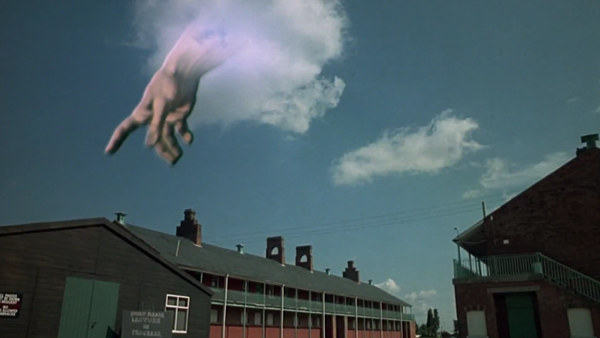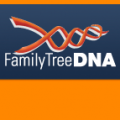For six years, I’ve lived about an hour away from the mecca of genealogical research: the Family History Library* in Salt Lake City, Utah. Being primarily interested in preserving the family photos** and documents, though, I didn’t have the motivation to visit and start digging around in my genealogical research… until this past weekend.
The catalyst for my recent plunge into harder genealogical research was RootsTech, a “leading edge conference designed to bring technologists together with genealogists, so they can learn from each other and find solutions to the challenges they face in family history research today.” Genealogy + Technology = right up my alley!
Not that I don’t mind getting my hands dirty (literally) while searching through old paper archives and scanning with the ol’ eyeballs. But registering for RootsTech got me excited, and then I couldn’t turn down a big discount on an ancestry.com subscription. So I suddenly found myself invested (literally) in family history. The conference was really cool, educational, and very motivating. I was unfortunately still recovering from a really bad cold, but I didn’t let that stop me from stuffing my head with information and ideas. Move over, sinus congestion!
The top three sessions that I attended were:
Three Steps Forward, Ten Steps Back: Using modern tools to identify contemporary family and locate new ancestral connections.
Presented by Amy Johnson Crow from Archives.com.
This session helped me visualize the spread of information down through generations. Typically, one ancestor has a family Bible with handwritten family history in it, and someone four generations later ends up with it. But connections between distant cousins are often lost over time, so an individual researcher (that’s me!) might not even know about the existence of the cousin, let alone the family artifact. She recommends focusing on more than just one’s direct ancestral line. Fleshing out family trees to include all the descendants of your ancestors can lead you to a new contemporary cousin who might have information or artifacts of interest. If you have a lead on a cousin but not enough information to actually locate them, you can pay for a basic Living Person search on Archives.com to find their contact information.
New Avenues in Genetic Genealogy.
Presented by Jane Buck and Elise Friedman from FamilyTreeDNA.com.
I’d vaguely heard about the use of DNA tests in relation to genealogy, but I had no idea how incredibly useful it could be. I thought it was just used for general testing to see the path your waaaay-back ancestors took after leaving Africa. Cool, but worth a couple hundred bucks? Well, I’m on board with it now. (Yes, sponsoring a session at a conference can help a company’s profits.)
What I learned is that FamilyTreeDNA (along with other competitors) are creating huge databases that check anywhere from 12 to 111 markers on cheek swab DNA samples to provide not just ancestral origins, but to match and biologically verify family trees with other participants. You can trace the origin of your surname, confirm suspected family relationships, determine the percentages of your ethnic makeup, and join the “GENetwork” to connect with new cousins.
- Y-chromosome testing can verify how far back your surname goes—and if maybe great-great grandma lied about her son’s paternity—and match you to others in the database who inherited the same Y-chromosome and so are descended from the same male ancestor. Women should have their closest male relative perform this test. Father, brother, uncle, grandfather, great-uncle… every male receives an exact copy of his father’s Y-chromosome.
- mtDNA testing (mitochondrial DNA) is linked to DNA that is inherited on the maternal line. Both females and males can take this test, which works similarly to Y-chromosome testing except for the maternal side.
- Family Finder testing works to find relatives across all family lines. It uses autosomal DNA (a mix inherited from both the mother and father) to provide you a breakdown of your ethnic percentages and connect you with relatives descended from any of your ancestral lines within approximately the last 5 generations.
Since entrance to the RootsTech exhibit hall was technically open to the public, and my dad is currently living in Utah, I convinced him to stop by the Family Tree DNA booth to take advantage of the conference discount. He swabbed his cheek right there for the Y-chromosome test, so that will be fun to see when the results come back. My dad was not a gold star cheek swabber, though—he kept stopping to talk during the 60 seconds he was supposed to be swabbing. To make jokes and flirt with Jane Buck, because that’s who my dad is. That’s also something that won’t show up on the DNA test!
Telling Stories: Transforming the bare facts of genealogy into the astonishing tale of you and your family. Presented by Ian Tester, product manager for Brightsolid.
What I find most intriguing about family history are the stories that lie asleep in documents, artifacts, and photos, dormant and waiting to be discovered. Ian Tester started his session by discussing the main reasons why people are interested in genealogy: fun, love, an/or money.
Money? Yeah, he’s talking about professional genealogists. Family history is the opposite of a money-maker for me, what with the serious time investment, required organizational materials, archival-quality storage containers, research expenses… I could go on, but my husband might read this and develop an interest in seeing receipts.
Fun and love? Absolutely the case for me. Ian asserted that family history easily becomes a personal detective story. It’s done out of love for living or recently deceased family members, and people rarely keep at it unless they find it fun and/or challenging. Family history can also center on this humdinger of a question: Where do I fit, culturally, into the world? I think that puts a slightly more attainable twist on figuring out the meaning of life.
In terms of telling a family story, Ian stressed the importance of gaps between facts. He shared this very cool video of a guy writing genealogical facts on a whiteboard, with a narrative that extrapolates questions and develops a story from the facts. Gaining a tangible understanding of real life vs. life in records.
Stories Through Data from Ross Forrest on Vimeo.
It’s important to understand that family history is never a linear path. There are avenues of exploration that lead to understanding the places in which your ancestors existed, which will help you understand them in the long run. You choose the direction in which you travel. We project ourselves into our ancestors’ lives, and teach ourselves history by researching family history.
Ian brought up another great insight: your narrative viewpoint changes as you learn about your family history. I have found this astoundingly true for me; it seems like each new discovery ultimately affects how I look at the world.
For example: I grew up feeling like I didn’t have a lot in common with my very religious Catholic grandmother. Now, though, as I read her personal notes and newspaper clippings and ponder her collection of stuff that remained after she passed away, I find myself connecting with her worldview more than I thought possible. I don’t share her connection to God, but I understand more about why she felt that connection and how it influenced decisions throughout her life. This brings me closer to her and will lead me to tell her stories with a different, perhaps more sympathetic viewpoint.
When it comes down to it, a family tree is just a bunch of names and numbers. The stories behind the tree make it meaningful. And when one considers the meaning of life…
“Don’t stand there gawping like you’ve never seen the hand o’ God before!”
Overall, I am very happy to have attended RootsTech and hope to attend again next year. My whole experience isn’t really covered in this blog post, but this is all that I can manage for now.
*The Family History Library is run by the LDS church (aka The Mormons) but it’s open to the public and they don’t proselytize. As a non-Mormon, I found the number of “Sister This” and “Elder That” nametag-clad volunteers/employees wandering around to be intimidating at first, but really it’s fantastic because they’re all there to help.
**Though it has been driving me crazy to see faces of dead ancestors for whom I know nothing about.







